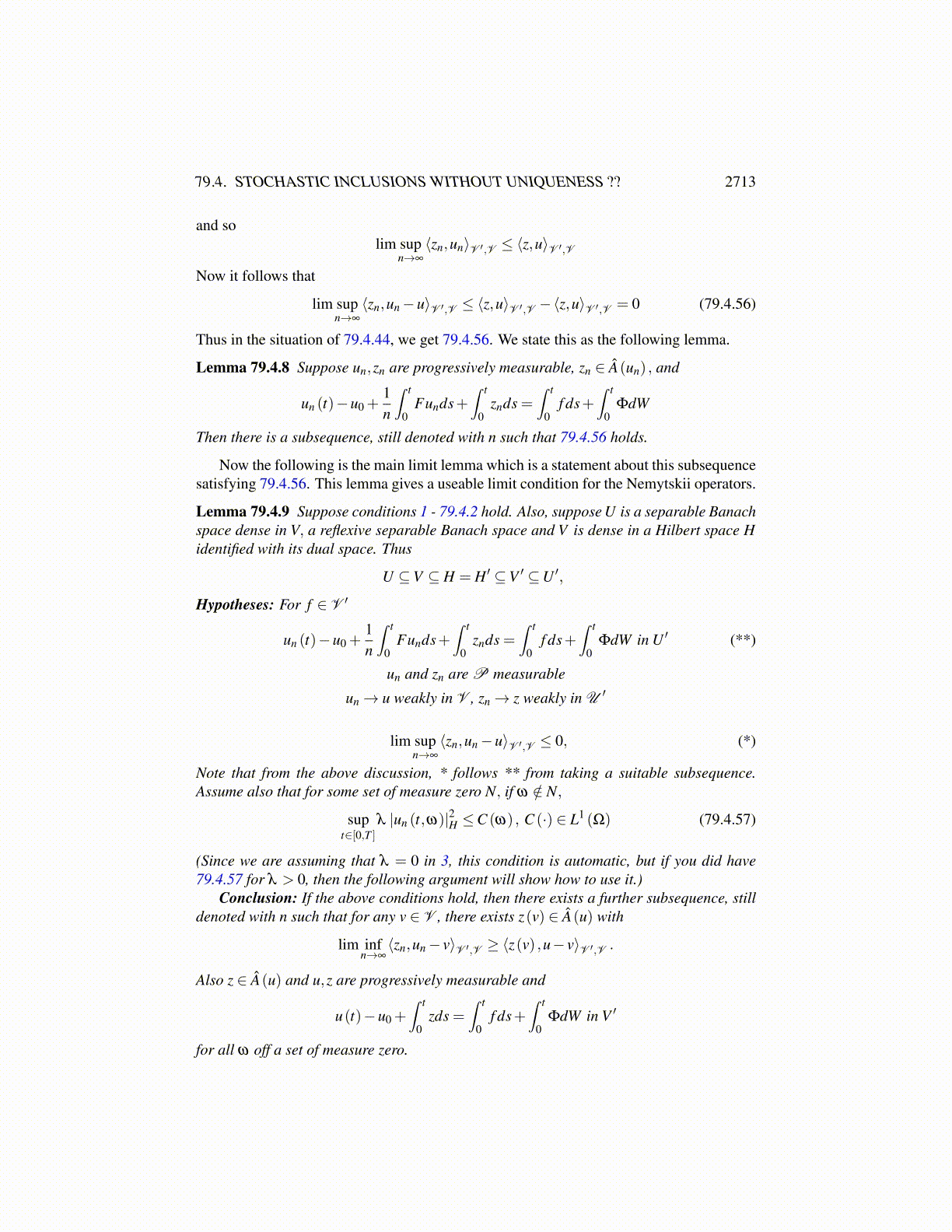
79.4. STOCHASTIC INCLUSIONS WITHOUT UNIQUENESS ?? 2713
and consider I (w)≡∫
Bε(w(t,ω) ,ek)
2 d (P×m), where the measure is product measure. Itfollows that I is clearly convex and strongly lower semicontinuous on
H ≡ L2 (Ω× [0,T ] ;H)
To see that this is strongly lower semicontinuous, suppose wn→ w in H but
lim infn→∞
I (wn)< I (w) .
Then take a subsequence, still denoted with n such that the liminf equals lim. Then take afurther subsequence, still denoted with n such that wn (t,ω)→ w(t,ω) for a.e.(t,ω). Thenby Fatou’s lemma,
I (w)≤ lim infn→∞
I (wn)< I (ω)
a contradiction. Thus I is strongly lower semicontinuous as claimed. By convexity, it isalso weakly lower semicontinuous. Hence by the weak convergence of un to u 79.4.47,
lim infn→∞
∫Bε
(un (t,ω) ,ek)2 d (P×m)≥
∫Bε
(u(t,ω) ,ek)2 d (P×m)
≥∫
Bε
lim infn→∞
(un (t,ω) ,ek)2 d (P×m)+ ε (P×m)(Bε)
Thus (P×m)(Bε) = 0. Since this is so for each ε > 0, it must be the case that the claimedinequality is satisfied off a set of measure zero. Let Σ denote this progressively measurableset of product measure zero.
LetMε ≡ {t : (t,ω) ∈ Σ for ω in a set of measure larger than ε,Nε} .
Mε ≡{
t :∫
Ω
XΣ (t,ω)dP > ε
}If this set has positive measure, then
m(Mε)ε ≤∫
Mε
∫Ω
XΣ (t,ω)dPdt ≤ (P×m)(Σ) = 0.
Thus each Mε has measure zero and so, taking the union of Mε for ε a sequence convergingto 0, it follows that for t /∈M, defined as ∪ε Mε ,(t,ω) is in Σ only for ω in a set of measure≤ ε for each ε . Thus for t /∈M, (t,ω) is in Σ only for ω in a set of measure zero. Lettingt /∈M, it follows from 79.4.54 that for a.e. ω
lim infn→∞|un (t,ω)|2 = lim inf
n→∞∑k(un (t,ω) ,ek)
2
≥ ∑k
lim infn→∞
(un (t,ω) ,ek)2
≥ ∑k(u(t,ω) ,ek)
2 = |u(t,ω)|2H
Therefore, from Fatou’s lemma, for such t,
lim infn→∞
∫Ω
|un (t,ω)|2 dP≥∫
Ω
lim infn→∞|un (t,ω)|2 dP≥
∫Ω
|u(t,ω)|2H dP
This has proved the following fundamental result.